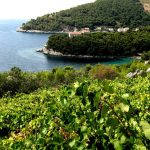May the 13th, 2023 – HAC has announced that it is set to update Lucko traffic regulations and that Croatia’s road users should prepare themselves for quite the change in this regard as everything undergoes optimisation.
As Poslovni Dnevnik writes, Croatian Motorways (HAC) has announced new Lucko traffic regulations in order to reduce issues with summer congestion, meaning that the number of approach lanes will increase from three to four in the direction of the sea, and ENC usage will be enabled at all entrance lanes.
In the press release issued by Croatian Motorways on the topic, it is stated that owing to Croatian accession to the Schengen area and the border control with neighbouring Slovenia having been abolished, new Lucko traffic regulations need to be introduced as that border crossing, which is no longer there, was the thing which used to slow down the flow of road traffic.
“With the abolition of border controls, an additional increase in the intensity of traffic entering the A1 highway at Lucko is expected. As such, HAC has started to improve the throughput capacity of the Lucko intersection within the framework of the existing dimensions of the motorway. Through these new solutions, the plan is to facilitate the flow of traffic and reduce congestion on the section of the A1 Zagreb – Split – Ploce motorway, especially in the approach to Lucko heading in the direction of the coast.”
In the area of the Lucko intersection, traffic management will be ensured continuously with two traffic lanes from the direction of Slovenia towards the south, instead of the current single traffic lane. This should contribute to the more even distribution of traffic flows in the direction of the coast and, according to the Croatian Motorways, it will reduce the wait to join the traffic lane in the approach to the Lucko zone. In addition to that, the number of lanes in the approach area to the toll booths/gates has been increased from three to four lanes.
The dynamic management of the toll gates will eliminate the situation of intertwining traffic during peak hours, for example when an ENC user is in the far left lane, they will no longer have to look for an ENC lane, but will be able to use any lane to make such a passage. As a result, passing with an ENC device and picking up a card for manual payment will be possible at all entrance toll lanes, which will be opened depending on traffic demand to the south, as well as to the north.
Shorter queues are expected as a result of the upcoming Lucko traffic regulations
Although these measures won’t manage to solve all of the problems due to the limited capacity of the Lucko – Bosiljevo section itself, it is expected that the positive effects will be visible through the reduction of the length of the queue along the Zagreb ring road.
It is also expected that the queues of vehicles waiting to pay, which extend to the ring road, will form later on and as such disperse earlier (meaning there will hopefully be a shorter waiting time in the queue). This, as HAC stated, will contribute to increasing traffic safety on the ring road and in the area of the Lucko intersection, and savings in time which would otherwise be lost in traffic jams are also expected.
The aim of the new measures is to optimise the bandwidth of all directions arriving at the Lucko toll station. The new solution is also intended to ensure the safety of all road users, and to reduce time losses for users due to congestion and traffic jams on this very important section of the motorway.
“With adherence to the speed limit and the caution and cooperation of all road users, it’s possible to achieve a safe and efficient traffic flow on the section of the motorway from Zagreb to the Bosiljevo intersection, which will make it much easier for people to travel to their desired tourist destinations,” the statement from HAC concluded.
For more, check out our news section.









